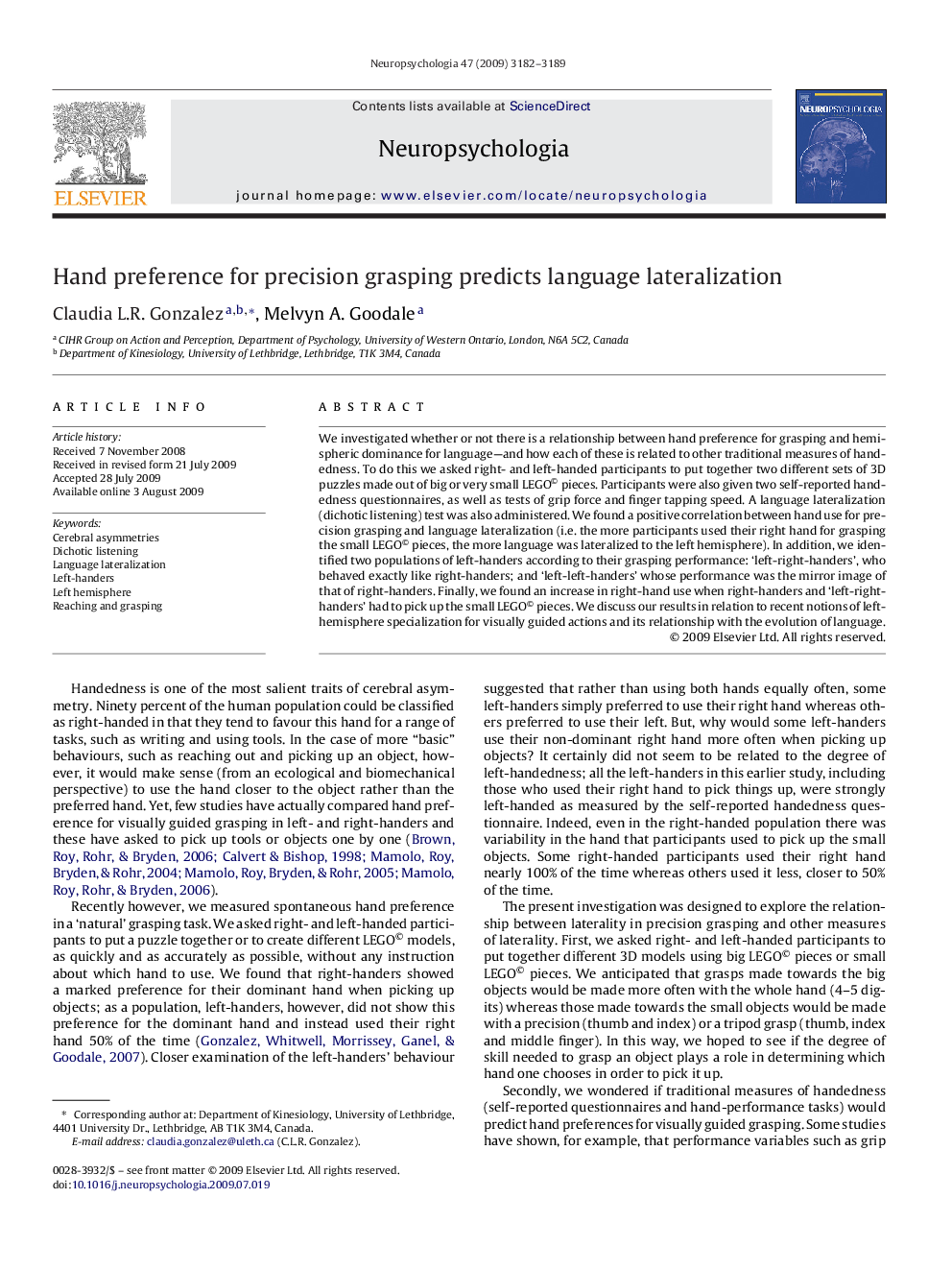| Article ID | Journal | Published Year | Pages | File Type |
|---|---|---|---|---|
| 10466234 | Neuropsychologia | 2009 | 8 Pages |
Abstract
We investigated whether or not there is a relationship between hand preference for grasping and hemispheric dominance for language-and how each of these is related to other traditional measures of handedness. To do this we asked right- and left-handed participants to put together two different sets of 3D puzzles made out of big or very small LEGO© pieces. Participants were also given two self-reported handedness questionnaires, as well as tests of grip force and finger tapping speed. A language lateralization (dichotic listening) test was also administered. We found a positive correlation between hand use for precision grasping and language lateralization (i.e. the more participants used their right hand for grasping the small LEGO© pieces, the more language was lateralized to the left hemisphere). In addition, we identified two populations of left-handers according to their grasping performance: 'left-right-handers', who behaved exactly like right-handers; and 'left-left-handers' whose performance was the mirror image of that of right-handers. Finally, we found an increase in right-hand use when right-handers and 'left-right-handers' had to pick up the small LEGO© pieces. We discuss our results in relation to recent notions of left-hemisphere specialization for visually guided actions and its relationship with the evolution of language.
Keywords
Related Topics
Life Sciences
Neuroscience
Behavioral Neuroscience
Authors
Claudia L.R. Gonzalez, Melvyn A. Goodale,
